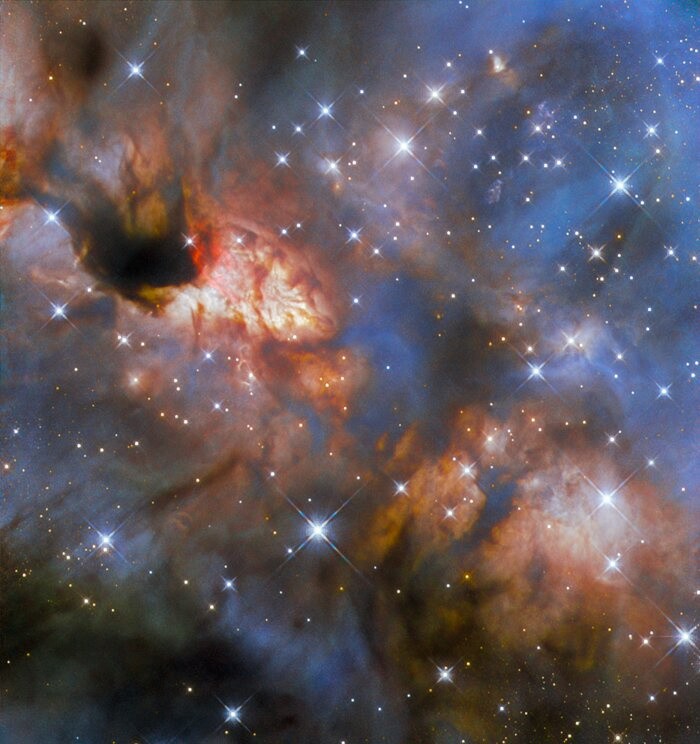The NASA/ESA Hubble Space Telescope has unveiled a dreamy starscape in the Milky Way, offering a glimpse into a bustling stellar nursery teeming with vibrant colors and cosmic activity.
A Dreamy Starscape in the Milky Way
The Hubble Picture of the Week unveils the splendor of IRAS 16562-3959, a nearby star-forming region located in the constellation Scorpius, approximately 5900 light-years away from Earth.

Illuminated by the radiant glow of newborn stars, this cosmic masterpiece is a testament to the intricate dance of light and matter within our galactic neighborhood. The image was captured using Hubble's Wide Field Camera 3 (WFC 3),revealing a kaleidoscope of colors and activity.
The richness of color in the image is made possible by the utilization of four distinct filters, each designed to capture specific wavelengths of light. These filters, meticulously selected by astronomers, allow for the creation of vibrant and detailed images that unveil the hidden secrets of the cosmos.
ESA noted that while raw telescope observations appear monochrome, skilled artists and image specialists employ their expertise to infuse these images with vibrant hues that reflect the nuances of the celestial landscape.
In the case of IRAS 16562-3959, where the data is primarily in the infrared spectrum, artists employ a creative interpretation to represent the unseen wavelengths.
By assigning bluer colors to shorter wavelengths and redder colors to longer ones, a stunning image emerged. These colors are technically "false colors" as the cameras did not capture them, but they are based in reality, according to Peta Pixel.
Read Also : NASA Hubble Discovers Saturn's Ring System Heats Planet's Atmosphere-A Never-Before-Seen Phenomenon!
New Stars Are Born
At the heart of the image lies IRAS 16562-3959, a bustling region where new stars are being born. Hidden within a cloak of dust and gas, a large star, approximately 30 times the mass of our sun, is also forming.
Despite the dust blocking much of the near-infrared spectrum, the central area displays clear indications of star formation, illuminated by the soft radiance of emerging stars.
According to ESA, a powerful jet originating from the massive protostar has cut through the nearby dust clouds, leaving behind a visible trace that suggests the active processes occurring within the region.
The nebula itself is a celestial canvas adorned with layers of colored gas and dust, swirling and billowing across the cosmic landscape.
Speckled with the brilliance of foreground stars, the nebula exudes an ethereal beauty, punctuated by diffraction spikes that add a touch of cosmic elegance to the scene.
Related Article : NASA's Hubble Space Telescope Captures 'Butterfly Nebula' In Stunning Motion | Fun Facts About This Beautiful Space Butterfly

ⓒ 2025 TECHTIMES.com All rights reserved. Do not reproduce without permission.




